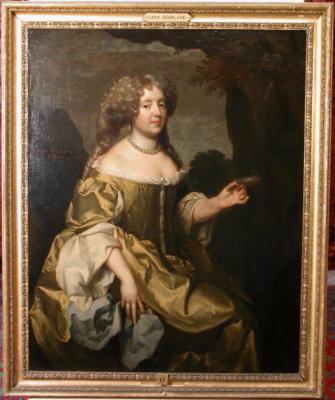Robert Godfrey receipts, 1665-1799
View Online
Manuscript Cookbooks Survey Database ID#
524Place of Origin
EnglandDate of Composition
mostly 1650-1799Description
Contained in a notebook of 334 pages, this 179-page manuscript is written in several hands, some toward the end bearing late eighteenth or early nineteenth century dates. The book begins with an 11-page index and 44 pages of recipes, all in the same hand, perhaps that of Robert Godfrey, who inscribed the book on the first page: "The receipts within this booke were written by Robert Godfrey Servant to the right honorable the Ladie Borlase of Bockmore in the parish of Medmenham in the county of Buck in the yeare of our Lord God One Thousand Six Hundred Sixty Five and in the Seaventeenth yeare of King Charles the Second over England. (In July)." Born Alice Bankes, Lady Borlase (1621-1683) was the wife of Sir John Borlase (1619-1672), who served in the English Long Parliament from 1641 to 1644, was briefly jailed for his Royalist sympathies by Cromwell in 1645, and served in the Cavalier Parliament from 1661 to his death. The Godfrey cookbook opens with recipes "to dry pippings," "to dry figs," "to make almond puddings in guts," and "rice puddings in guts." Subsequent recipes include "suger cakes," "souse eel," "haggis pudding," and "to preserve pippins green."Written underneath the Godfrey inscription, in a later hand, is "James Warren 1732," who may have contributed to the book or may simply have owned it.
The section following the Godfrey cookbook, written in a different hand, is headed "These Receipts following are my Mothers." Several other hands continue the collection and credit is given for some of the recipes to Lady Fanshaw, Mrs. Cooke, Lady Curson, Lord Chesterfield, "My grandmother Warren," and many others. In addition to recipes for meats, fish, puddings, and preserves there are some for wines (cowslip, elder, orange, raspberry, and raisin) as well as a recipe for spruce beer by Major MacDonald of Newfoundland. A printed advertisement with a recipe for making spruce beer from an essence sold in Quebec, London, and New York is tipped in. Also included are recipes for making dyes of yellow, purple and green. As usual in such collections, there are some household remedies, one of them a mole powder for convulsions, which involves catching the moles alive (in March). Another interesting entry, headed "Charles-Towne South Carolina Sept. 28th," describes the smallpox epidemic and the use of "tare water" as being superior to inoculation as a preventative. Toward the end of the book some recipes are dated from 1799, among them a recipe for portable soup by Lady Napier, Stilton cheese by Mrs. Sherbrooke, apricot marmalade, and milk lemonade. Some of the very last recipes, on pages 138 to 139, are definitely of a much later date than the initial parts of the book. Among them is a ham toast and green pea soup. At the end of the book is a second index on 6 pages.
This manuscript has been published as Ladie Borlase's receiptes booke, edited by David E. Schoonover with the assistance of Jessica Renaud (Iowa City: University of Iowa Press, 1998).

